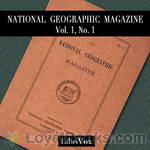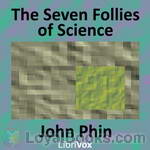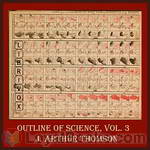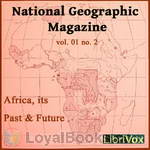|
Books Should Be Free Loyal Books Free Public Domain Audiobooks & eBook Downloads |
|
|
Books Should Be Free Loyal Books Free Public Domain Audiobooks & eBook Downloads |
|
Nature Books |
|---|
|
Book type:
Sort by:
View by:
|
By: Ida Dandridge Bennett | |
|---|---|
 The Vegetable Garden: A Manual for the Amateur Vegetable Gardener
The Vegetable Garden: A Manual for the Amateur Vegetable Gardener
This book is a good reference on vegetable gardening. It covers the economic value of a vegetable garden, planning and locating the garden, maintaining soil fertility, hotbeds, garden tools, sowing seeds, transplanting seedlings, growing and storing vegetables, managing garden pests, and fall garden work. | |
By: Pliny the Elder | |
|---|---|
 The Natural History, volume 2
The Natural History, volume 2
Naturalis Historia (Latin for "Natural History") is an encyclopedia published circa AD 77-79 by Pliny the Elder. It is one of the largest single works to have survived from the Roman empire to the modern day and purports to cover the entire field of ancient knowledge, based on the best authorities available to Pliny. The work became a model for all later encyclopedias in terms of the breadth of subject matter examined, the need to reference original authors, and a comprehensive index list of the contents... | |
By: Various | |
|---|---|
 National Geographic Magazine Vol. 01 No. 1.
National Geographic Magazine Vol. 01 No. 1.
National Geographic Magazine Volume 1 Number 1 published in 1889. Topics of articles are:Announcement by the National Geographic SocietyIntroductory Address by the PresidentGeographic Methods in Geologic InvestigationClassification of Geographic Forms by GenesisThe Great Storm of March 11 to 14, 1888The Great Storm off the Atlantic Coast of the United States, March 11th to 14th, 1888The Survey of the CoastThe Survey and Map of Massachusetts | |
By: John Phin (1830-1913) | |
|---|---|
 The Seven Follies of Science
The Seven Follies of Science
The seven follies of science; a popular account of the most famous scientific impossibilities and the attempts which have been made to solve them to which is added a small budget of interesting paradoxes, illusions, and marvels. | |
By: J. Arthur Thomson (1861-1933) | |
|---|---|
 The Outline of Science Vol. 3
The Outline of Science Vol. 3
The Outline of Science was written specifically with the man-on-the-street in mind as the target audience. Covering scientific subjects ranging from astronomy to biology to elementary physics in clear, concise and easily understood prose, this popular science work is largely as relevant today as when first published in 1922.In this third volume (of four), we learn about psychic science, the characteristics and interrelations of living creatures, as well as Botany, Biology, and Chemistry. Some chapters are devoted to the new applied sciences of electricity, telegraphy, and flying. | |
By: Ida Dandridge Bennett (1860-1925) | |
|---|---|
 The Flower Garden: A Handbook of Practical Garden Lore
The Flower Garden: A Handbook of Practical Garden Lore
This book is a good reference on the perennial flower gardening and landscaping. It contains information on growing the plants from seed and explains how to grow and care for the traditional garden flowering plants, bulbs, trees, and shrubs. There are sections covering all aspects of ornamental gardens including water gardens and caring for house plants in the winter. The author has lots of unexpected but good advice in her chapter of Don’ts, for example: "Don’t supply with cut flowers, plants... | |
By: Oliver Hartley | |
|---|---|
 Hunting Dogs
Hunting Dogs
The title of this book quotes its object. To tell something of night hunting, and especially to suggest how the ever necessary dog can best be selected, trained, maintained and utilized, is the consideration of first importance. To round out the subject all forms of hunting will receive some notice, and the various breeds of dogs will be so far dealt with, that their value and usefulness in their given fields may be determined. Best of all, the contents of this volume are based on the opinions and declarations of men who have had years of experience in the matters on which they presume to write.(Extracted from the Introduction) | |
By: Edna Brush Perkins (1880-1930) | |
|---|---|
 The White Heart of Mojave
The White Heart of Mojave
"The White Heart of the Mojave" recounts a 1920's adventure "in the wind and sun and big spaces" of Death Valley by two independent minded women, Edna Brush Perkins and Charlotte Hannahs Jordan. Both women were early feminists, Edna as chairwoman of the greater Cleveland Woman's Suffrage Party (1916-18). At the end of the Great War, the two friends wanted nothing more than to escape "to the solitariness of some wild and lonely place far from city halls, smokestacks, national organizations, and streets of little houses all alike... | |
By: William Ruschenberger (1807-1895) | |
|---|---|
 The Elements of Entomology
The Elements of Entomology
The Elements of Entomology is one of seven in a Series of First Books of Natural History Prepared for the Use of Schools and Colleges. It is a succinct little textbook from 1845 presents an introduction to entomology. The author was a surgeon in the U.S. Navy and president of the Academy of Natural Sciences. | |
By: Various (1833-1884) | |
|---|---|
 John Stuart Mill; His Life and Works
John Stuart Mill; His Life and Works
This biography is actually a series of essays by prominent personalities of the time that shed light on John Stuart Mill's life and areas of endeavor. Those areas include his experiences in India House, his moral character, certain botanical explorations, how effective he was as a critic, studies in morals and the law, and discoveries concerning political economy. They also explore ideas concerning his influence on institutions of higher learning, accomplishments as a politician, and fame as a philosopher. | |
 National Geographic Magazine Vol. 01 No. 2
National Geographic Magazine Vol. 01 No. 2
National Geographic Magazine Volume 1 Number 2 published in 1889. Topics of articles are:Africa, its Past and Future Reports on:Geography of the LandGeography of the SeaGeography of the AirGeography of Life | |
By: John Charles Van Dyke (1856-1932) | |
|---|---|
 The Desert, Further Studies in Natural Appearances
The Desert, Further Studies in Natural Appearances
The Desert by John Charles Van Dyke, published in 1901, is a lush, poetic description of the natural beauty of the American Southwest. "What land can equal the desert with its wide plains, its grim mountains, and its expanding canopy of sky!" Van Dyke, a cultivated art historian, saw "sublimity" in the desert's "lonely desolation," which previous generations had perceived only as a wasteland, and his book has a conservationist flavor which seems distinctly modern. "The deserts should never be reclaimed," he writes... | |
By: Reuben Gold Thwaites (1853-1913) | |
|---|---|
 Historic Waterways
Historic Waterways
Historic Waterways, Six Hundred Miles of Canoeing down the Rock, Fox and Wisconsin Rivers.This volume is the record of six hundred miles of canoeing experiences on historic waterways in Wisconsin and Illinois during the summer of 1887. There has been no attempt at exaggeration, to color its homely incidents, or to picture charms where none exist. It is intended to be a simple, truthful narrative of what was seen and done upon a series of novel outings through the heart of the Northwest. If it may induce others to undertake similar excursions, and thus increase the little navy of healthy and self-satisfied canoeists, the object of the publication will have been attained. | |
By: Gertrude Jekyll (1843-1932) | |
|---|---|
 Wood and Garden
Wood and Garden
Wood and Garden reads like a walk through the garden with reknowned garden designer Gertrude Jekyll as she discusses her plant choices and placement, how she integrates nature into her design, and how she maintains and enjoys the garden. | |
By: Mary Roberts Rinehart (1876-1958) | |
|---|---|
 Through Glacier Park
Through Glacier Park
This is about a three-hundred mile trip across the Rocky Mountains on horseback with Howard Eaton. It is about fishing, and cool nights around a camp-fire, and long days on the trail. It is about a party of all sorts, from everywhere, of men and women, old and young, experienced folk and novices, who had yielded to a desire to belong to the sportsmen of the road. And it is by way of being advice also. Your true convert must always preach. (Introduction by Mary Roberts Rinehart quoted from the text.) | |
By: Selina Gaye (1840-1914) | |
|---|---|
 The World's Lumber Room
The World's Lumber Room
If this book were written today, it would be called "The Story of the World's Rubbish".That may not sound a promising subject for a book, but we are taken on a journey all over the world (and beyond) to explain the many varieties of dust and refuse - animal, vegetable and mineral - how it is made both by man and by nature, what happens to it, and why we need it. We find that recycling is nothing new: man has been doing it for centuries, and nature has been doing it for billions of years. As every schoolboy knows, 'matter is neither created nor destroyed', so it stands to reason that every particle of it must be somewhere... | |
By: William Wordsworth (1770-1850) | |
|---|---|
 The River Duddon: A Series of Sonnets
The River Duddon: A Series of Sonnets
Located in a part of Cumbria that was once part of Lancashire, the River Duddon rises in the high fells of the Lake District and flows for 25 miles through varied scenery before disappearing into the sands between Millom and Barrow-in-Furness. Wordsworth’s series of sonnets, inspired by his walks along the river, were written over a period of years, but are arranged so as to follow its downward course from the fells to the sea. Part One of this reading consists of the 33 sonnets and postscript that were first published as a series in 1820... | |
By: Mabel Osgood Wright (1859-1934) | |
|---|---|
 Flowers and Ferns in their Haunts
Flowers and Ferns in their Haunts
Pleasant non-fiction journey into the backwoods of the New England coastal countryside by the first president of the Connecticut Audubon Society, circa 1900. | |
By: Francis Edward Tourscher (1870-1939) | |
|---|---|
 Work Of The Sisters During The Epidemic Of Influenza October, 1918
Work Of The Sisters During The Epidemic Of Influenza October, 1918
In 1918 over 2,000 Roman Catholic nuns left their convents in the Philadelphia area to nurse the sick and dying of the influenza epidemic. Twenty-three of the sisters died because of their ministrations. This is an account of their heroic work published in the American Catholic Historical Society Of Philadelphia, 1919. “Gathered and arranged from reports of personal experiences of the sisters and contributed by request of the compiler.” The compiler/author was an academic/priest at Villanova University in Pennsylvania. Since there are no chapter headings, this recording uses the section headings of the book. - Summary by David Wales and book's subtitle | |
By: Robert N Bader | |
|---|---|
 Amphibians and Reptiles in Captivity
Amphibians and Reptiles in Captivity
In recent years the number of people interested in keeping amphibians and reptiles in captivity has grown rapidly. All too often, these same people have little knowledge of the proper care needed for their captives, nor do they know where to turn in order to learn the needs of their animals. It is the intent of the authors of this special issue to offer the proper information needed to successfully keep amphibians and reptiles in captivity. We are by no means THE experts on the subject, nor do we claim to cover all the facts. However, we do hope that enough information is furnished to answer most of the common questions asked by people. - Summary by Tom R. Johnson | |
By: John Woodhouse Audubon (1812-1862) | |
|---|---|
 Audubon's Western Journal: 1849-1850
Audubon's Western Journal: 1849-1850
John Woodhouse Audubon , son of the famous painter John James Audubon and an artist in his own right, joined Col. Henry Webb's California Company expedition in 1849. From New Orleans the expedition sailed to the Rio Grande; it headed west overland through northern Mexico and through Arizona to San Diego, California. Cholera and outlaws decimated the group. Many of them turned back, including the leader. Audubon assumed command of those remaining and they pushed on to California, although he was forced to abandon his paints and canvases in the desert…... | |
By: Ivan Ray Tannehill (1890-1959) | |
|---|---|
 Hurricane Hunters
Hurricane Hunters
This 1955 book by an acknowledged authority is an absorbing account of meteorology before the advent of weather satellites. “This is the lively account of the hair-raising experiences of the men who have probed by sea and air into the inner mysteries of the world’s most terrible storms…. Here is the first intimate revelation of what the human eye and the most modern radars see in the violent regions of the tropical vortex. The descriptions of the activities of these valiant scouts of the storms are taken from personal interviews with military flyers and weathermen who have risked their lives in the furious blasts in all parts of the hurricane... | |
By: George Washington Carver (1864-1942) | |
|---|---|
 How to Grow the Peanut: and 105 Ways of Preparing It for Human Consumption
How to Grow the Peanut: and 105 Ways of Preparing It for Human Consumption
George Washington Carver, in his most famous work, explains how to grow peanuts, the benefits of using them, and 105 recipes that incorporate peanuts. - Summary by Nicholi Volta | |
By: Joseph Rogers (1821-1889) | |
|---|---|
 Reminiscences Of A Workhouse Medical Officer
Reminiscences Of A Workhouse Medical Officer
Joseph Rogers was an English physician, medical officer, and health care reformer in London. The system of poor-law dispensaries and separate sick wards, with proper staffs of medical attendants and nurses, was due to the efforts of Rogers and his colleagues. His memoir, published in 1889, contains an informative biography written by his brother. His career was not without conflict as his zeal sometimes offended governing boards. - Summary by David Wales | |
By: Adelia B. Beard (1857-1920) | |
|---|---|
 On The Trail: An Outdoor Book for Girls
On The Trail: An Outdoor Book for Girls
Lina and Adelia Beard, co-founders of the first American girls' scouting group, originally called the Girl Scout Society, then the Girl Pioneers, and finally as the Camp Fire Girls, provide practical advice and encouragement to girls and young women who wish to explore a "free, wholesome, and adventurous outdoor life." - Summary by Christine Lehman, aka stoogeswoman | |
By: Thomas Mann (1875-1955) | |
|---|---|
 Bashan And I
Bashan And I
Simple and unpretentious as a statement by Francis d’Assisi, yet full of a gentle modern sophistication and humour, this little work will bring delight and refreshment to all who seek flight from the heavy-laden hour. It is, moreover, one of the most subtle and penetrating studies of the psychology of the dog that has ever been written—tender yet unsentimental, realistic and full of the detail of masterly observation and description, yet in its final form and precipitation a work of exquisite literary art. - Summary from the Foreword by Herman George Scheffauer | |
By: Various | |
|---|---|
 Living Animals of the World, Volume 1: Mammals
Living Animals of the World, Volume 1: Mammals
The Living Animals of the Natural World, subtitled "a popular Natural History", proposed to present the most updated version of the wonders of the Animal World in a new and clearer form. It used photography instead of the traditional illustrations of the life of beasts, birds, fishes, insects, corals, and the subjects photographed were obtained from every part of the world, many of them from the most distant islands of the Southern Ocean, the great barrier reef of Australia, the New Zealand hills, the Indian jungle, the South African veldt, and the rivers of British Columbia... | |
By: William Paley (1743-1805) | |
|---|---|
 Natural Theology
Natural Theology
In this early nineteenth-century classic, William Paley assesses how our understanding of nature reflects characteristics of its creator. First published in 1802, the book went through more than twenty editions, remains in print, and is still a reference point in the ongoing conversation about evolution or creation as the better explanation for the appearance of order and design in our universe. - Summary by Barry Ganong | |
By: Various | |
|---|---|
 Birds, Vol. I, No 6, June 1897
Birds, Vol. I, No 6, June 1897
Birds, Illustrated by Color Photography was a monthly publication of the Nature Study Publishing Company of Chicago. It includes short poems, anecdotes and factual descriptions of birds with accompanying color plates. The magazine was published from 1897-1907 under the various titles, "Birds," "Birds and all Nature," "Nature and Art" and "Birds and Nature." Later issues were expanded to include animals, plants, etc. Summary by J. M. Smallheer | |
By: Henry J. Tompkins | |
|---|---|
 With Swag and Billy: A Guide to Walking Trips in Tourist Districts of New South Wales
With Swag and Billy: A Guide to Walking Trips in Tourist Districts of New South Wales
A guide to hikes around Sydney, Australia, from the early years of the twentieth century. In 1895, Henry J. Tompkins and William Mogford Hamlet, two friends with literary inclinations and a taste for romantic scenery, formed the Warragamba Walking Club. Although the strength of their membership is unknown , the Warragambas also counted John Le Gay Brereton, poet and professor of literature, among their number. Published by the Government Tourist Bureau, With Swag and Billy ran to three editions ... | |
By: Pliny the Elder (23-79) | |
|---|---|
 Natural History Volume 6
Natural History Volume 6
Naturalis Historia is an encyclopedia published circa AD 77-79 by Pliny the Elder. It is one of the largest single works to have survived from the Roman empire to the modern day and purports to cover the entire field of ancient knowledge, based on the best authorities available to Pliny. The work became a model for all later encyclopedias in terms of the breadth of subject matter examined, the need to reference original authors, and a comprehensive index list of the contents. The scheme of his great work is vast and comprehensive, being nothing short of an encyclopedia of learning and of art so far as they are connected with nature or draw their materials from nature... | |
By: Arthur Henry Patterson (1857-1935) | |
|---|---|
 Through Broadland in a Breydon Punt
Through Broadland in a Breydon Punt
Arthur Henry Patterson was a self-taught naturalist who, from a very early age, devoted much of his free time to observing, discovering and documenting all aspects of the natural history of the Norfolk Broads, especially the area around Breydon Water near his home town of Great Yarmouth. At some 75000 acres , the Broads are the largest protected wetland in Britain. AHP was the author of many books about Broadland as well as submitting numerous papers and articles to nature societies and journals... | |